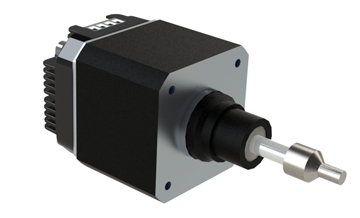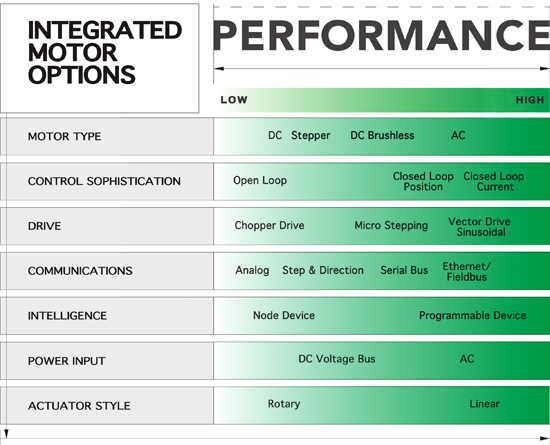
Integration in Motion
By Alexa Loiskandl, Myostat Motion Control
Automation Electronics Motion Control Power Transmission Machine Building Alexa Loiskandl motorsChosen wisely, integrated motors offer a step up in price, programmability and performance.
 When selecting an integrated motor for your system, it’s important to understand the range of options available to ensure you are selecting the best motor for the job. By definition, integrated motors combine separate elements to provide a harmonious, interrelated whole. While this definition is accurate, it provides little insight into what elements are being combined, how they work together or how to choose one type over another.
When selecting an integrated motor for your system, it’s important to understand the range of options available to ensure you are selecting the best motor for the job. By definition, integrated motors combine separate elements to provide a harmonious, interrelated whole. While this definition is accurate, it provides little insight into what elements are being combined, how they work together or how to choose one type over another.
An integrated motor combines the motor, encoder, driver and controller in a single programmable unit. When compared to a non-integrated servo system, where the driver and controller are external to the motor housing, this configuration typically takes up less space and uses fewer wires.
Recently, Myostat was approached by an integrator for a large North American electronics manufacturer looking to automate a specific portion of their manufacturing process. Prior to the automation, staff were required to hand-screw components together at multiple work stations. Automating this process would require servo driven actuators, in an X-Y configuration, executing quick moves along with a high level of accuracy and repeatability. We recommended a small integrated closed-loop motor with multiple programmable I/O ports and communication abilities. It was able to control the motorized screw driver and the signal LEDs, as well as provide an Ethernet interface for quality control data acquisition—extensively running the entire machine.
To complete the automation process, a second motor was required to move two small linear actuators in a synchronized manner, in that they brought a jig together, squarely fastening circuit boards together prior to inserting the fasteners. Air cylinders could not provide the level of coordination required and therefore an integrated open-loop motor, which incorporated a captive screw actuator, was selected. This integrated motor does not have a high level of programmable intelligence but accepts simple commands and is available at a lower price point than a closed-loop motor.
The main components affecting cost and performance are illustrated in the chart below. This matrix describes typical options and available choices across the spectrum of integrated motor offerings from various manufacturers. Current products on the market represent a subset of the total permutations illustrated in the chart.
An integrated motor was the solution in both instances cited above; however, very different configurations were selected. The motors were chosen based on price, programmability and performance and used for different tasks with very different outcomes. Engineers who understand the range of options available “under the hood” of integrated motors and how they affect functionality will have greater success designing a system to suit their application, budget and desired performance.
www.myostat.ca
 Alexa Loiskandl is a sales engineer with Myostat Motion Control and a recent graduate of Carleton University with a B.Eng in Biomedical and Electrical Engineering.
Alexa Loiskandl is a sales engineer with Myostat Motion Control and a recent graduate of Carleton University with a B.Eng in Biomedical and Electrical Engineering.

